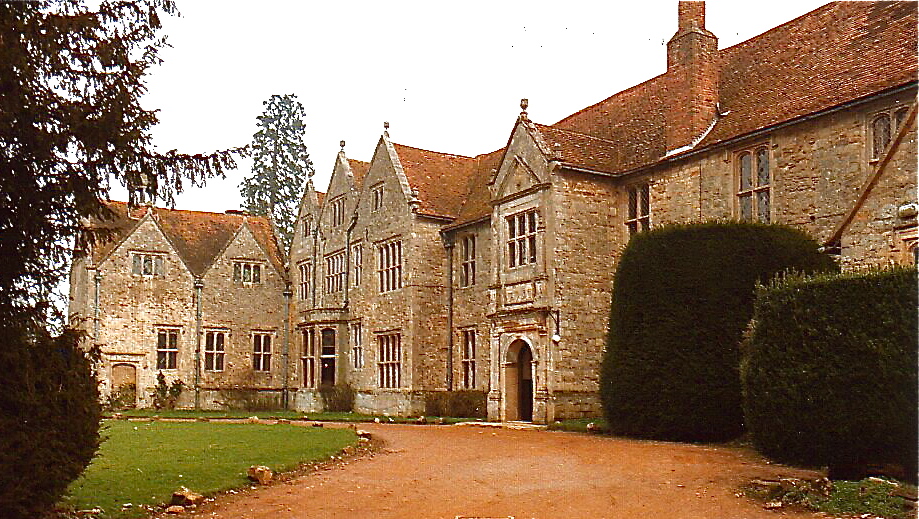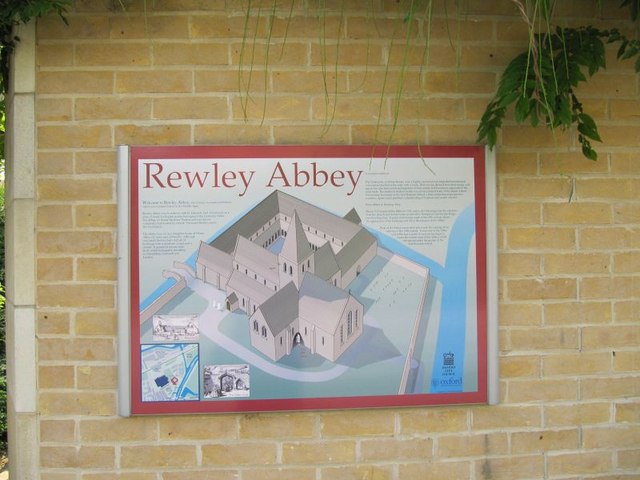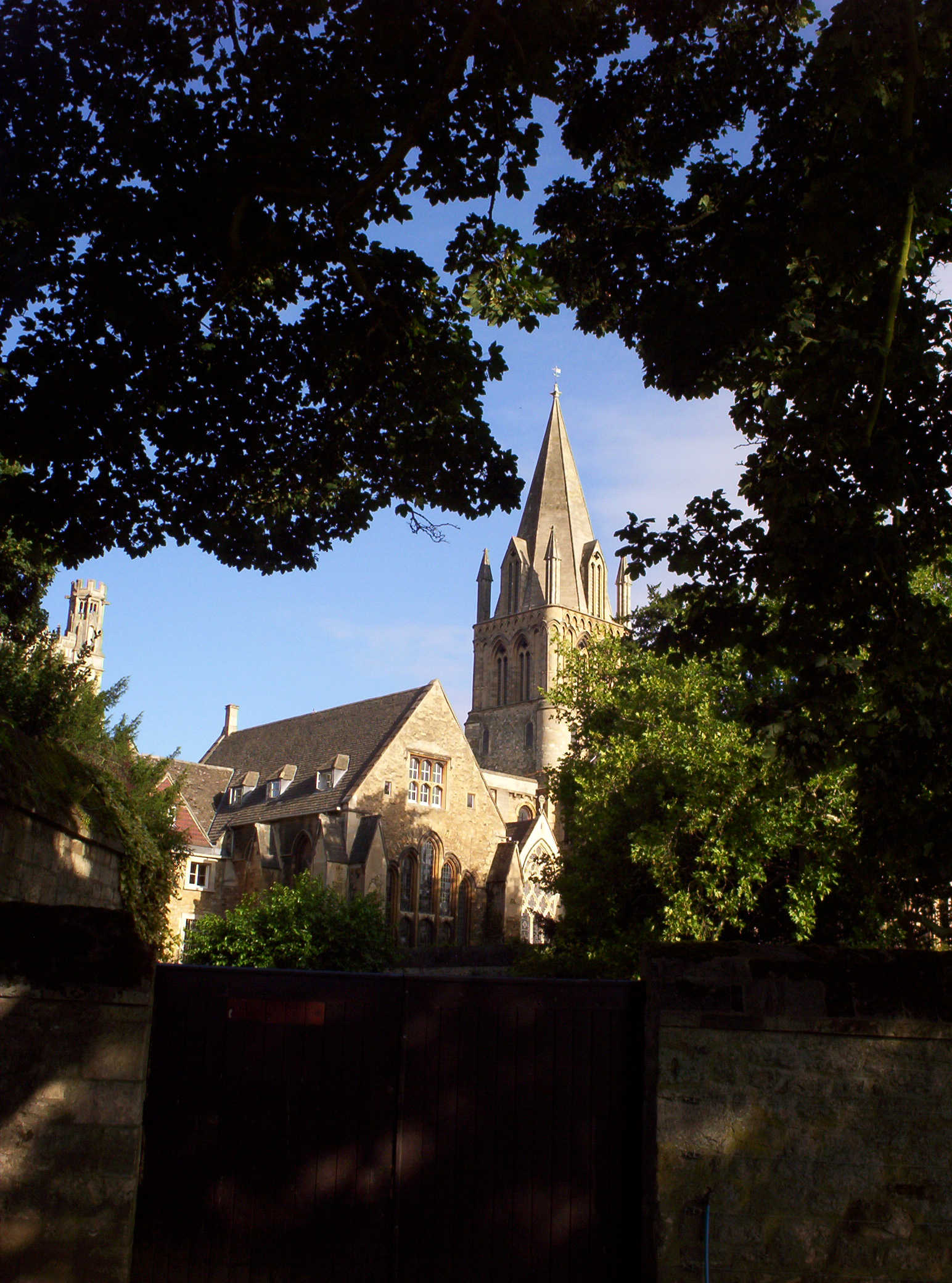|
Ela Longespée
Ela Longespée, Countess of Warwick (died 9 February 1298) was an English noblewoman. She was the daughter of Ela of Salisbury, 3rd Countess of Salisbury and William Longespée, and sister to, among others, Nicholas Longespee, Bishop of Salisbury. Ela married, first, Thomas de Beaumont, 6th Earl of Warwick, and, secondly, Philip Basset. She was a great religious benefactor, and contributed to the foundation of Merton College, Oxford. Early life and first marriage Ela was probably born sometime around 1210, and married the 24-year-old Thomas of Warwick, son of Earl Henry of Warwick, in the summer of 1229, before his father's death. Thomas succeeded his father soon afterwards, bringing to his depleted earldom Ela's substantial marriage portion, the manor of Chitterne in Wiltshire. The marriage depleted the earldom further: to attract it the Warwicks contributed a dower of five of their demesne manors, including the manor of Tanworth-in-Arden and the forest of Sutton in Warwickshi ... [...More Info...] [...Related Items...] OR: [Wikipedia] [Google] [Baidu] |
Arms Of William Longespée, 3rd Earl Of Salisbury (d
Arms or ARMS may refer to: *Arm or arms, the upper limbs of the body Arm, Arms, or ARMS may also refer to: People * Ida A. T. Arms (1856–1931), American missionary-educator, temperance leader Coat of arms or weapons *Armaments or weapons **Firearm **Small arms *Coat of arms **In this sense, "arms" is a common element in pub names Enterprises *Amherst Regional Middle School *Arms Corporation, originally named Dandelion, a defunct Japanese animation studio who operated from 1996 to 2020 *TRIN (finance) or Arms Index, a short-term stock trading index *Australian Relief & Mercy Services, a part of Youth With A Mission Arts and entertainment *ARMS (band), an American indie rock band formed in 2004 *Arms (album), ''Arms'' (album), a 2016 album by Bell X1 *Arms (song), "Arms" (song), a 2011 song by Christina Perri from the album ''lovestrong'' *Arms (video game), ''Arms'' (video game), a 2017 fighting video game for the Nintendo Switch *ARMS Charity Concerts, a series of charitable ... [...More Info...] [...Related Items...] OR: [Wikipedia] [Google] [Baidu] |
Oxfordshire
Oxfordshire is a ceremonial and non-metropolitan county in the north west of South East England. It is a mainly rural county, with its largest settlement being the city of Oxford. The county is a centre of research and development, primarily due to the work of the University of Oxford and several notable science parks. These include the Harwell Science and Innovation Campus and Milton Park, both situated around the towns of Didcot and Abingdon-on-Thames. It is a landlocked county, bordered by six counties: Berkshire to the south, Buckinghamshire to the east, Wiltshire to the south west, Gloucestershire to the west, Warwickshire to the north west, and Northamptonshire to the north east. Oxfordshire is locally governed by Oxfordshire County Council, together with local councils of its five non-metropolitan districts: City of Oxford, Cherwell, South Oxfordshire, Vale of White Horse, and West Oxfordshire. Present-day Oxfordshire spanning the area south of the Thames was h ... [...More Info...] [...Related Items...] OR: [Wikipedia] [Google] [Baidu] |
University Of Oxford
, mottoeng = The Lord is my light , established = , endowment = £6.1 billion (including colleges) (2019) , budget = £2.145 billion (2019–20) , chancellor = The Lord Patten of Barnes , vice_chancellor = Louise Richardson , students = 24,515 (2019) , undergrad = 11,955 , postgrad = 12,010 , other = 541 (2017) , city = Oxford , country = England , coordinates = , campus_type = University town , athletics_affiliations = Blue (university sport) , logo_size = 250px , website = , logo = University of Oxford.svg , colours = Oxford Blue , faculty = 6,995 (2020) , academic_affiliations = , The University of Oxford is a collegiate research university in Oxf ... [...More Info...] [...Related Items...] OR: [Wikipedia] [Google] [Baidu] |
Selborne
Selborne is a village in Hampshire, England, south of Alton, Hampshire, Alton, and just within the northern boundary of the South Downs National Park. The village receives visitors because of its links with the naturalist Revd. Gilbert White, a pioneer of birdwatching. The village St Mary the Virgin is a Grade I listed church that dates back to the late 12th century. There is a primary school, and a Village Stores & Post Office (currently closed and For Sale). Furthermore, there is one public house the "Selborne Arms". A bus service that runs through the village links it to Alton, Hampshire, Alton and Petersfield. At the back of the village, behind the Selborne Arms and Gilbert White's Field Studies Centre, there is the ''Zig-Zag Path'', which was cut into the hillside in the 1760s by Gilbert White and his brother John, to provide easier access to the Hanger and Selborne Common on the summit of Selborne Hill. A complete history of Selborne, from its geology through its estab ... [...More Info...] [...Related Items...] OR: [Wikipedia] [Google] [Baidu] |
Reading Abbey
Reading Abbey is a large, ruined abbey in the centre of the town of Reading, in the English county of Berkshire. It was founded by Henry I in 1121 "for the salvation of my soul, and the souls of King William, my father, and of King William, my brother, and Queen Maud, my wife, and all my ancestors and successors." In its heyday the abbey was one of Europe's largest royal monasteries. The traditions of the Abbey are continued today by the neighbouring St James's Church, which is partly built using stones of the Abbey ruins. Reading Abbey was the focus of a major £3 million project called "Reading Abbey Revealed" which conserved the ruins and Abbey Gateway and resulted in them being re-opened to the public on 16 June 2018. Alongside the conservation, new interpretation of the Reading Abbey Quarter was installed, including a new gallery at Reading Museum, and an extensive activity programme. Abbey Ward of Reading Borough Council takes its name from Reading Abbey, which lies ... [...More Info...] [...Related Items...] OR: [Wikipedia] [Google] [Baidu] |
Studley Priory, Oxfordshire
Studley Priory was a small house of Benedictine nuns, ruled by a prioress. It was founded some time before 1176 in the hamlet of Studley in what is now the village of Horton-cum-Studley, northeast of Oxford in Oxfordshire, England, at 1 Horton Hill Road. In 1176, the priory received a grant from Bernard of St. Walery. The nuns were unhappy to be served poor beef and new beer on Thursday and Sunday nights, and no mutton. The priory was declared closed by 1536, but appears to have experienced a brief revival before its suppression in 1539. The priory lands were sold to the Croke family. The family built the house now known as Studley Priory, which still stands in its of grounds, in 1587; a member of the Croke family was a judge in the 1649 trial of Charles I. The house and its estate (which comprised most of the village of Horton-cum-Studley) was owned by the Croke family until around 1870 when it was sold to the Henderson family, who occupied it until World War II. During the ... [...More Info...] [...Related Items...] OR: [Wikipedia] [Google] [Baidu] |
Rewley Abbey
The Cistercian Abbey of Rewley was an abbey in Oxford, England. It was founded in the 13th century by Edmund, 2nd Earl of Cornwall. Edmund's father, Richard, 1st Earl of Cornwall, founder of Hailes Abbey, had intended to establish a college or chantry of three secular priests to pray for his soul, but his son Edmund substituted 'six Cistercian monks, having more confidence in them'. If this was the original plan, it was soon enlarged. In 1280 he offered the general chapter of the Cistercian order to found a college (studium) for Cistercians at Oxford, and the chapter accepted the offer, and decreed that the college should have the same privileges as the college of St. Bernard at Paris, and that it should be under the Abbot of Thame, as the other was under the Abbot of Clairvaux. The following year the chapter decreed 'out of due respect to the Earl of Cornwall' that the Abbot of Thame should be empowered to appoint an Abbot of his own choice for the house of study at Oxford, a ... [...More Info...] [...Related Items...] OR: [Wikipedia] [Google] [Baidu] |
Thame Abbey
Thame Abbey was a Cistercian abbey at Thame in the English county of Oxfordshire. Thame Abbey was founded in 1137 by Alexander, Bishop of Lincoln. It was dissolved in 1539. Most of the building stone was removed from the site, but the Abbot's House remained standing and was turned into a country house, of which two wings remain, Thame Park, by John Williams, 1st Baron Williams of Thame John Williams, 1st Baron Williams of Thame (c. 1500 – 14 October 1559) was Master of the Jewels and Lord President of the Council of the Welsh Marches. He was summoned to parliament as Lord Williams of Thame on 17 February 1554. Life Will .... fl. 1460 Richard Lyndesey Plea Rolls of the Court of Common Pleas; Michaelmas Term, 1460: first entry: (in Latin) Richard Lyndesey, of Thame, Oxon, abbot of the monastery of the BVM, as second defendant; http://aalt.law.uh.edu/AALT1/H6/CP40no799/bCP40no799dorses/IMG_1485.htm References Monasteries in Oxfordshire Cistercian monasteries in E ... [...More Info...] [...Related Items...] OR: [Wikipedia] [Google] [Baidu] |
Priory Of St Frideswide, Oxford
St Frideswide's Priory was established as a priory of Augustinian canons regular, in 1122. The priory was established by Gwymund, chaplain to Henry I of England. Among its most illustrious priors were the writers Robert of Cricklade and Philip of Oxford. The original nunnery founded by Frideswide was destroyed in 1002. After that there was a monastery of Augustinian canons. In 1524, Cardinal Wolsey dissolved the Priory, using funds from the dissolution of Wallingford Priory and other minor priories. He then used its premises, together with those of other adjacent religious houses, to found a new college to be called Cardinal College on the land where the Priory once stood. After Wolsey fell from power in 1530, King Henry VIII took over the nascent foundation, which he renamed Christ Church ("''Aedes Christi''"). The Church's five western bays of the nave made during the time of the Augustinian canons were demolished to make space to build the main quadrangle of the new co ... [...More Info...] [...Related Items...] OR: [Wikipedia] [Google] [Baidu] |
Oseney Abbey
Osney Abbey or Oseney Abbey, later Osney Cathedral, was a house of Augustinian canons at Osney in Oxfordshire. The site is south of the modern Botley Road, down Mill Street by Osney Cemetery, next to the railway line just south of Oxford station. It was founded as a priory in 1129, becoming an abbey around 1154. It was dissolved in 1539 but was created a cathedral, the last abbot Robert King becoming the first Bishop of Oxford. The see was transferred to the new foundation of Christ Church in 1545 and the building fell into ruin. It was one of the four renowned monastic houses of medieval Oxford, along with St Frideswide's Priory, Rewley and Godstow. History The house was founded by Robert D'Oyly the younger, Norman governor of Oxford, prompted by his wife, Edith Forne, who, to expiate the sins of her former life as the mistress of Henry I, solicited her husband to this pious work with a story of the chattering of magpies, interpreted by a chaplain as souls in Purgato ... [...More Info...] [...Related Items...] OR: [Wikipedia] [Google] [Baidu] |
William De Beauchamp, 9th Earl Of Warwick
{{Infobox noble , name = William de Beauchamp , title = 9th Earl of Warwick , image =Beauchamp.svg , caption =Arms of Beauchamp: ''Gules, a fesse between six cross crosslets or'' , alt = , CoA = , more = no , succession = , reign = , reign-type = , predecessor =William Mauduit, 8th Earl of Warwick , successor =Guy de Beauchamp, 10th Earl of Warwick , suc-type = , spouse = , spouse-type = , issue-type = , issue = , issue-link = , issue-pipe = , full name = , native_name = , styles = , other_titles = , noble family = , house-type = , father = , mother = , birth_name = , birth_date = c. 1238 , birth_place = , christening_date = , christening_place = , death_dat ... [...More Info...] [...Related Items...] OR: [Wikipedia] [Google] [Baidu] |
Walter De Merton
Walter de Merton ( – 27 October 1277) was Lord Chancellor of England, Archdeacon of Bath, founder of Merton College, Oxford, and Bishop of Rochester. For the first two years of the reign of Edward I he was - in all but name - Regent of England during the King's absence abroad. He died in 1277 after falling from his horse, and is buried in Rochester Cathedral. Early life Walter was born in around 1205 to a land-owning family at Basingstoke; beyond that there is no definite information about the date or place of birth. His mother was Christina Fitz-Oliver and his father William. By 1237 both his parents were dead, and Walter was a clerk in holy orders. He was perhaps educated at Merton Priory, but certainly was employed there as a young clerk, receiving from it the benefice of Cuddington. In 1241, Walter became clerk to Nicholas Farnham, quondam rector of another of Merton's parishes, Long Ditton, and now promoted to bishop of Durham. Career In 1241 Walter already held a number ... [...More Info...] [...Related Items...] OR: [Wikipedia] [Google] [Baidu] |

.jpg)




